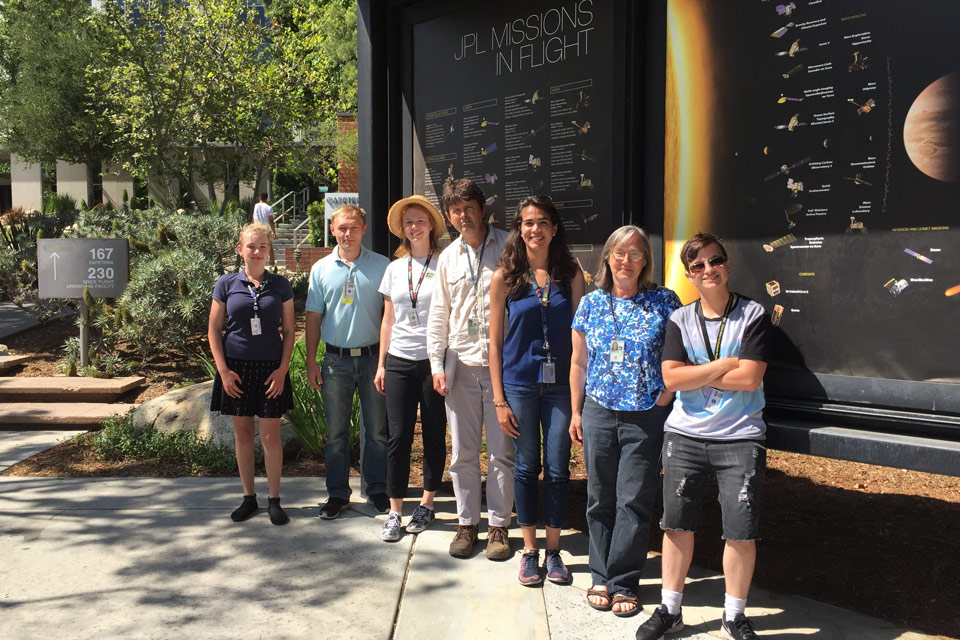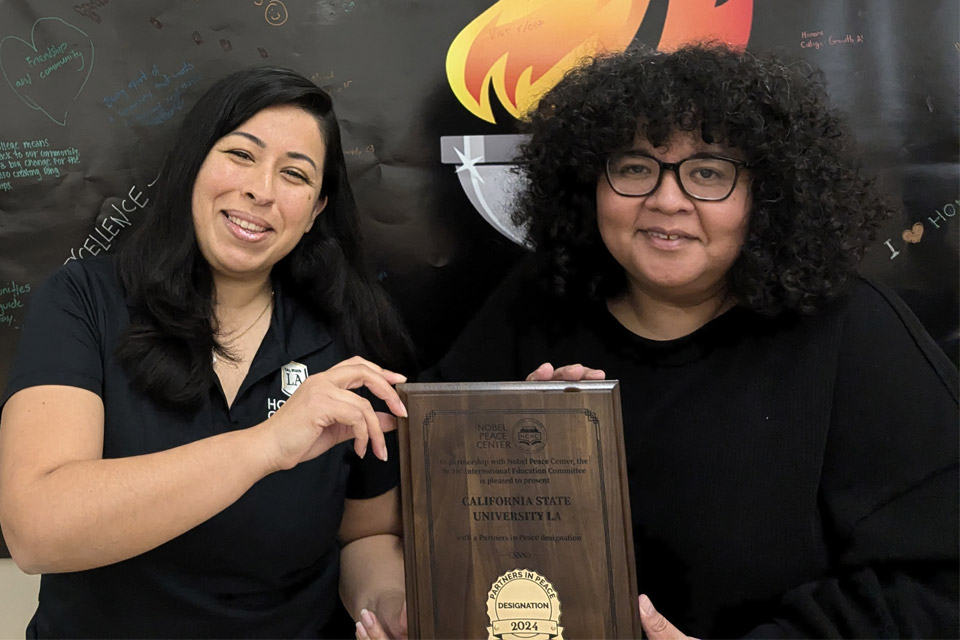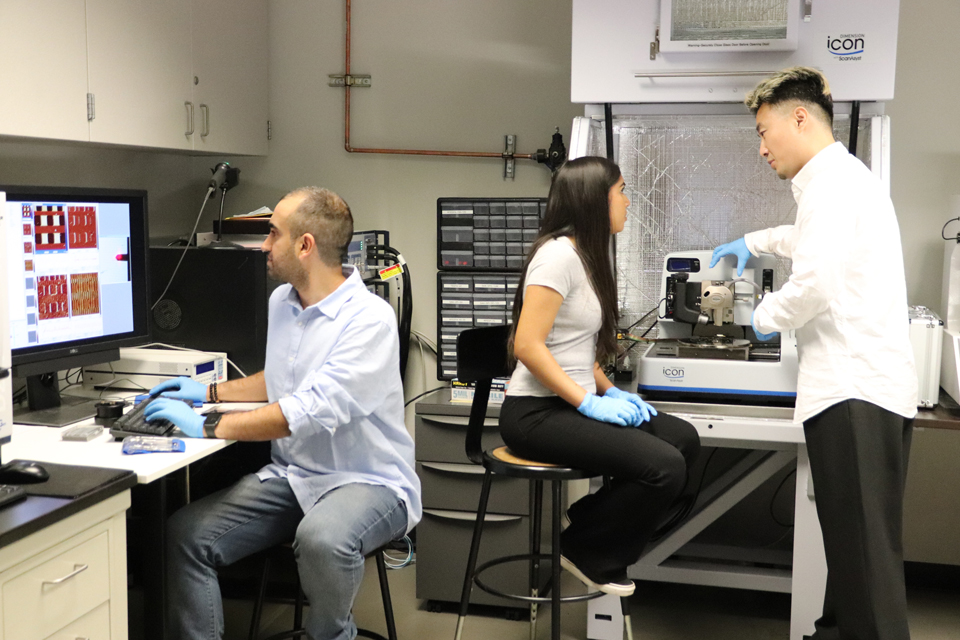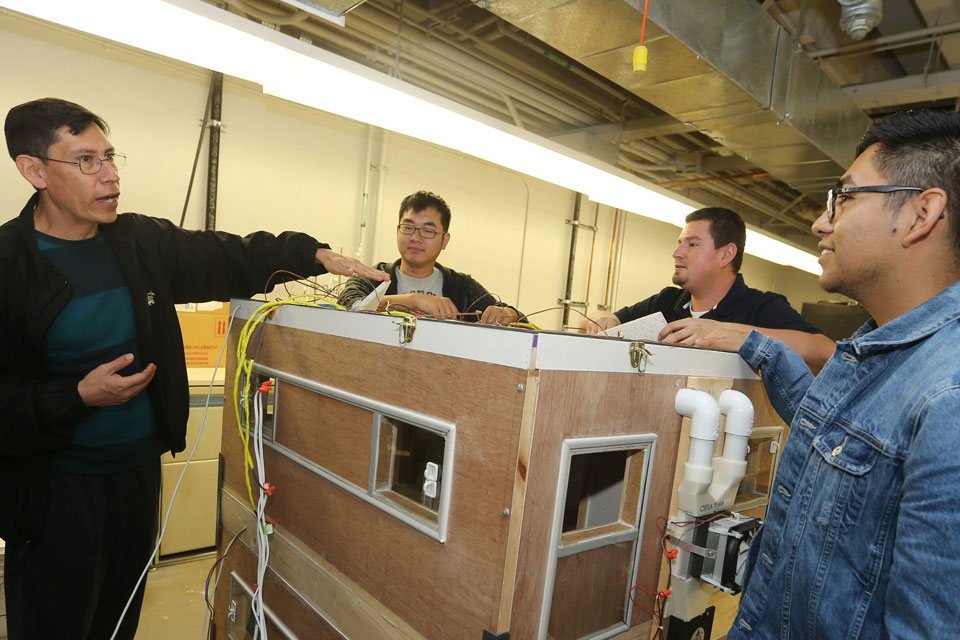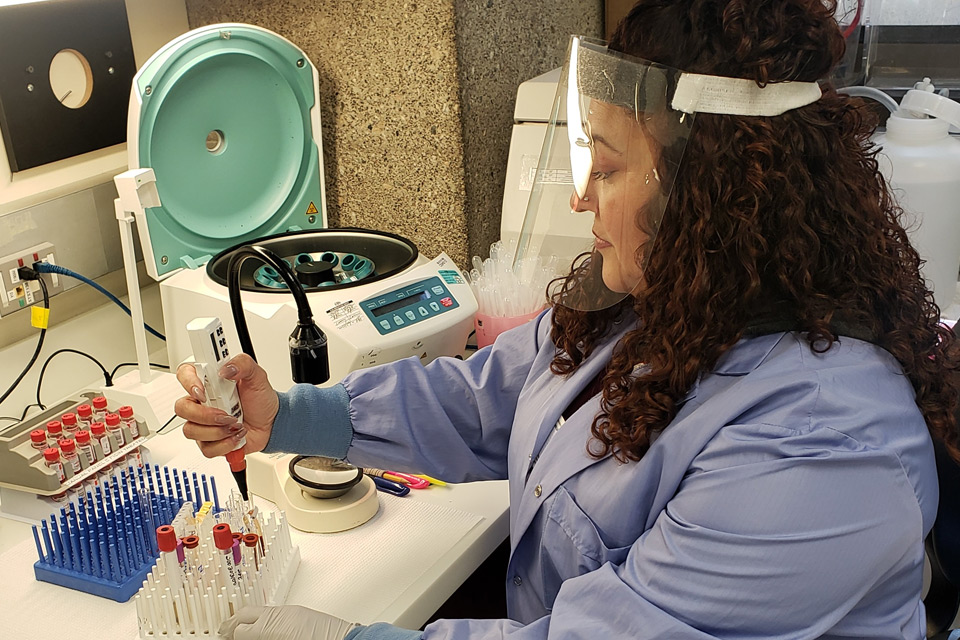Cal State LA has received a $375,000 grant from the National Aeronautics and Space Administration (NASA)’s Mentorship and Opportunities in STEM with Academic Institutions for Community Success (MOSAICS) program to support projects that offer career development opportunities for science, technology, engineering, and mathematics students.
The two-year grant will help create the Advancing Students Through Research Opportunities in Los Angeles (ASTRO-LA) Program, a sustainable partnership between Cal State LA and NASA’s Jet Propulsion Laboratory (JPL).
The grant is part of $6 million in grants from NASA that funds research projects building relationships between college faculty and researchers at the agency while providing mentorship and training for students in STEM disciplines.
“We are thrilled about the selection of the Advancing Students Through Research Opportunities in Los Angeles Program for funding as part of the NASA MOSAICS program,” said Cal State LA Professor Margaret Lazzarini, the grant’s lead principal investigator and coordinator of the ASTRO-LA Program. “We look forward to building our research relationship with collaborators at JPL and the opportunities that this grant will provide for Cal State LA students in the areas of astrophysics, planetary science, and atmospheric physics.”
The ASTRO-LA Program will support four faculty research projects in the Department of Physics and Astronomy, which is in the College of Natural and Social Sciences at Cal State LA. Working with Cal State LA faculty, students will be provided research opportunities in the areas of astrophysics, planetary sciences, and atmospheric physics at JPL.
One project will study emission from accreting black holes and neutron stars with space-based X-ray telescopes. Professor Lazzarini and students at Cal State LA will collaborate with JPL scientists Dr. Daniel Stern and Dr. Alina Kiessling in this observational high energy astrophysics research.
“Through this grant, Cal State LA students will get involved in cutting-edge research with NASA scientists studying some of the most extreme objects in the universe, black holes, and neutron stars,” said Lazzarini.
Another project will focus on observations and theoretical simulations of protostellar disks, which are present during the formation of new stars and planets. Professor Susan Terebey and students at Cal State LA will collaborate with Dr. Neal Turner at JPL on this astrophysics research.
“In our research, we are studying how the building blocks of life are delivered to young solar systems from regions of interstellar space where these organic molecules are abundant,” said
Terebey. “This new NASA grant is a wonderful opportunity for students to join us in doing research at the Jet Propulsion Laboratory.”
The third project will study Jupiter’s moon, Europa, in preparation for Europa Clipper, a flagship planetary mission set to launch later in 2024. Professor Emilie Royer and students at Cal State LA will collaborate with Dr. Cynthia Phillips at JPL on this planetary science research.
“This a very exciting time to do research in Planetary Science as Europa Clipper, the largest planetary mission that NASA has ever built, starts its journey to the Jupiter system to determine whether or not the icy moon could support life,” said Royer.
The next project will focus on experimental high-resolution infrared spectroscopy of trace gases for Earth and planetary atmospheres. Professor Karine Le Bris and students at Cal State LA will collaborate with Dr. Keeyoon Sung at JPL on this atmospheric science research.
“We are thrilled by the opportunity offered to our students to work at JPL and develop their research skills with cutting-edge spectroscopic instruments. This experience will not only stimulate their professional growth but also contributes to critical research on atmospheric science,” said Le Bris.
Through support from the MOSAICS program, undergraduate and graduate students will receive research training in these projects during the academic year at Cal State LA and be offered a paid 10-week summer research internship at JPL.
The NASA’s MOSAICS program, formerly the Science Mission Directorate Bridge Program, seeks to expand access to NASA research opportunities in the science and engineering disciplines, as well as to NASA’s workforce.
“The STEM workforce continues to grow, and today’s students, studying at a variety of higher-education institutions—community colleges, primarily undergraduate institutions, and minority-serving institutions—are the STEM workforce of tomorrow, who will work to solve some of our biggest challenges at home while answering some of our biggest questions about our universe,” said Padi Boyd, director of MOSAICS at NASA Headquarters in Washington. “Exposing today’s students to the incredibly inspiring and cutting-edge discoveries made through NASA’s space science people and resources ensures that these students get the training they need to persist in STEM careers, while fostering enduring collaborations between NASA researchers and faculty at a wide range of institutions.”
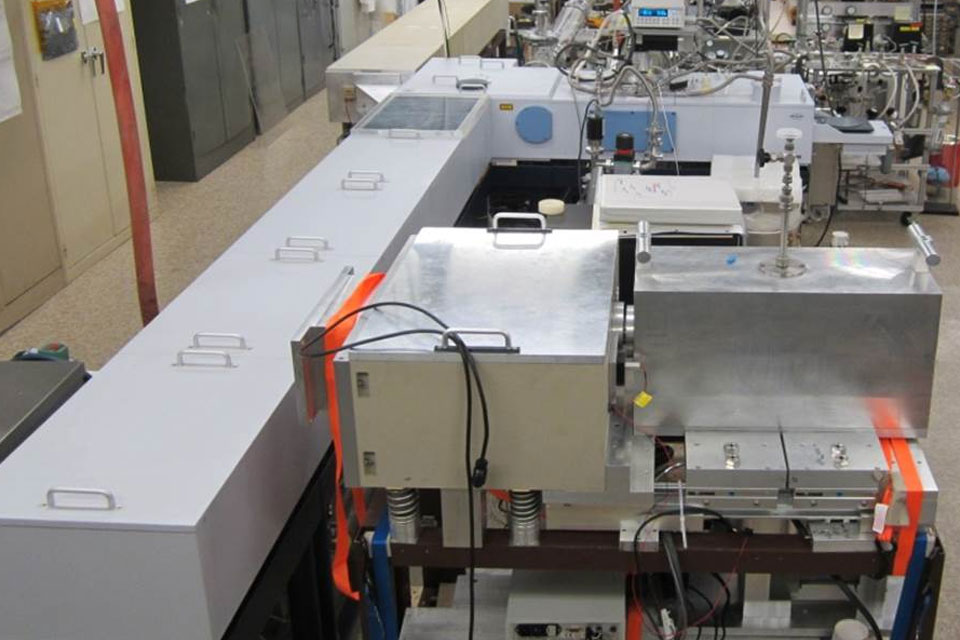
Photo: Led by Professor Karine Le Bris, Cal State LA students will conduct research using a Fourier-transform infrared spectrometer as part of a collaboration with Dr. Keeyoon Sung at JPL. (Credit: Dr. Keeyoon Sung/JPL)
# # #
California State University, Los Angeles is the premier comprehensive public university in the heart of Los Angeles. Cal State LA is ranked number one in the United States for the upward mobility of its students. Cal State LA is dedicated to engagement, service, and the public good, offering nationally recognized programs in science, the arts, business, criminal justice, engineering, nursing, education, and the humanities. Founded in 1947, the University serves more than 24,000 students and has more than 250,000 distinguished alumni.

